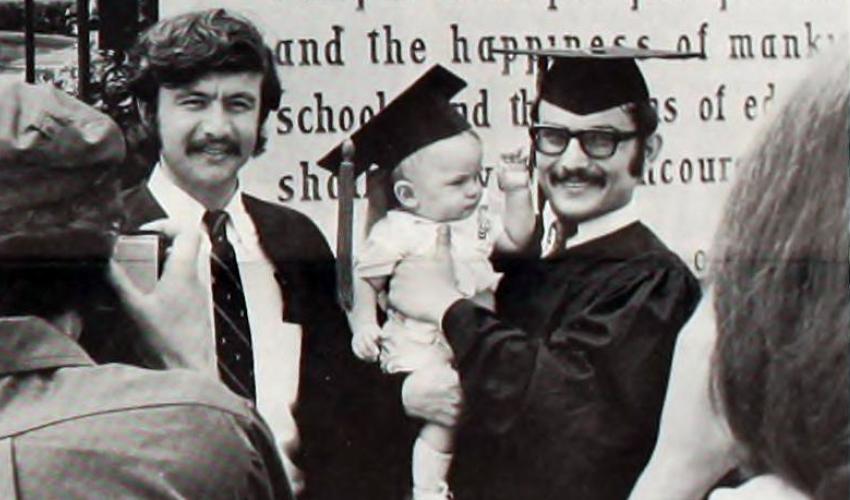
OHIO’s Class of 1971 reflects on campus, life experiences 50 years after graduation

For the United States, 1971 was the year of Ping-Pong Diplomacy and the Pentagon Papers. Walt Disney World debuted as did the nation’s first Starbucks. The 26th Amendment, lowering the voting age from 21 to 18, was certified, and the Vietnam War – and the protests against it – continued.
At Ohio University, the 1970-71 school year was defined by the year that had preceded it. Students returned to the Athens Campus after the May 15, 1970, closing of the University, following days of increasingly violent protests at college campuses across the country in the wake of members of the National Guard opening fire on a crowd at Kent State University, killing four students there.
1971 saw the completion of a two-year project to re-route the Hocking River, which ran through the center of campus, to its current location and the birth of the All-Campus Radio Network (ACRN), which continues to thrive today. Construction on the east and west wings of Alden Library, which opened in 1969, was underway. And, 1972 OHIO graduate and Baseball Hall of Famer Mike Schmidt was drafted by the Philadelphia Phillies, launching a legendary career in the sport.
It was against this backdrop that OHIO’s Class of 1971 graduated 50 years ago. As the members of the Class of 2021 prepare to don their commencement caps and gowns, OHIO News caught up with four of this year’s Golden Bobcats to discuss their OHIO experience, life on campus when they were students, and the 50 years that have passed since they graduated.
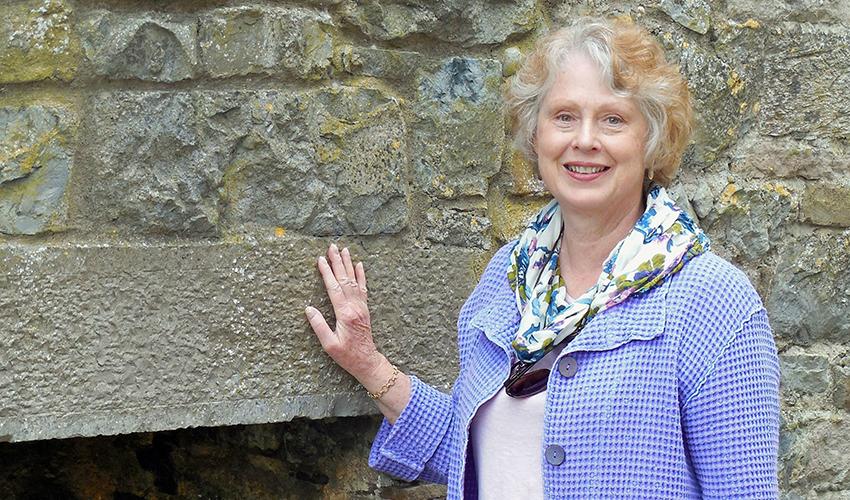
Mimi Bogard, AB ’71, English major
What is your favorite memory of your time as an Ohio University student?
Spring. I’m sure spring still brings everyone out onto the green. My favorite were those sunny spring days. We’d sit on the low wall in front of Cutler Hall – I’m sure people still do – and people-watch College Green. There was always somebody strumming a guitar, a group playing frisbee, probably an English class that had escaped Ellis Hall. That’s a favorite scene in my memory, and when I picture it, I still hear the noon chimes. I hope the chimes are still ringing there. (They are!)
What clubs or activities were you involved in at Ohio University?
My favorite high school activity had been choir, so at OU I sang in the University Chorus and the Wesley Choir at the First United Methodist Church. That was a deliberate step down from what had been a very heavy high school activity life. I came to college to find my own path, and I intentionally chose not to overburden myself with extra demands. I think that was a good decision that every student should do with intention. The real success of my college education was that I discovered who I was.
What was life like on campus while you were a student?
It was pretty much the cliché image of the late ’60s, but probably more diverse than the cliché. The student body was – and probably still is – very representative of all Ohio and beyond. In fact, it was that very diversity that attracted me to OU. There was no pressure there to be anything but oneself.
Of course, campus unrest was part of that time. Social issues triggered protests big, small, some violent, mostly addressing the Vietnam War but also racism, gender equity, environmental health. The May 4, 1970, Kent shootings and the subsequent OU closing were probably the most disturbing of those for me. I drove out of Athens on May 15th with National Guardsmen lining the sidewalks, and that’s still a chilling memory. …
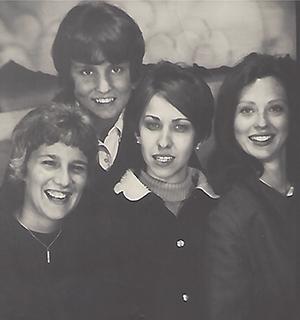
But, on the other hand, there was a lot of joy in campus life. You can’t congregate 20,000 young people in a somewhat defined area and not expect a lot of fun. … Even the flood of ’68 was a social event. I lived on West Green, and we all got over to East Green to look at their flood, and they did the reverse. It was a horrible situation, but everybody had a good time in spite of it.
And there were always things to do on campus. The program calendar was full of athletic and fine arts events. We were regulars at the MIA, “Movie in the Auditorium.” That place was packed full. Pre-social media, that’s what you did. You got together and enjoyed those sorts of things. It was a great way to meet new people. And my friends and I on a sunny day always explored both the campus and the town. There were far corners that were adventurous for us.
Tell us about your life after graduation.
I took my degree in English and prepared to teach, but positions for English language arts teachers were pretty scarce that year. I did, however, find a place at Sandy Valley Junior/Senior High School in Magnolia, Ohio. My entire education – K through bachelor’s degree – had been at large public schools, so I was unsure that this small, rural school setting was right for me, but it turned out to be the best place I could have landed. I taught English there to begin with, high school English, followed by many years as the school’s library media specialist, having earned my master of education degree at Kent State. I am forever grateful for a 35-year career there alongside wonderful people, and if that school name or town sounds familiar at all, it’s likely because one of Sandy Valley’s beloved alumni is OU Head Basketball Coach (and another OHIO graduate) Jeff Boals. What surprises people about small, rural schools is what we told our students there regularly: You can go anywhere from Sandy Valley, because we had so many fine alumni who did. …
I am quite active in the League of Women Voters of the Canton Area, and although I was certainly not a political science major at OU, that citizen’s awareness was really engendered by my time in Athens during those times of protests. I learned to speak up for myself and for others, and now I do that through the League of Women Voters.
There is one other anecdote I’d like to share, and we all have this experience. When you’ve been traveling for an extended period of time and you return home and that emerging feeling of homecoming – I think it’s a mix of relief, security, belonging. Well, over the last 50 years every time I’ve approached Athens, I’d drive in on State Street and down Congress, I have that same phenomenon, that experience. It’s a powerful sense of being home, and to me that is the OU effect. I don’t have friends who feel that about their own alma mater. There’s a special sense of attachment. I’ve had numerous relatives also attend OU, and we all remark on just how strange that feeling is. Now I’ve always lived in Canton, but my relatives have lived in a number of places, and they say they don’t feel that about any other place they’ve lived. It’s just, something happens in those years at OU that always makes you feel at home.
What advice would you give to Ohio University students today?
I would offer two suggestions. First, explore the possibilities, don’t be afraid to take an academic risk. I would advise a student that whenever possible choose a course that piques curiosity, something that falls outside of your major, far outside. My junior year, for instance, I finally caved to my general advisor and took a geography course, which was his area of expertise, and had I dabbled in that earlier, I might have become a very happy cartographer. It was very interesting, but it was too late in my college career to switch paths that radically. Dr. (Ted) Bernard was his name. I hope he’s still around; he would probably laugh to hear that story.
The second advice I would give to students is to make use of the University’s student services – the advisors for academics, career prep, health, finance – because the University is staffed with professionals who above all else want students to succeed, and I’m not sure that all students take as much advantage of that as they could. I think often students – it’s the first time they’re feeling independent, and they don’t want to ask for help because they’re guarding that independence. But those are wonderful services that their tuition is supporting, and really there are good people there. Take advantage of that.
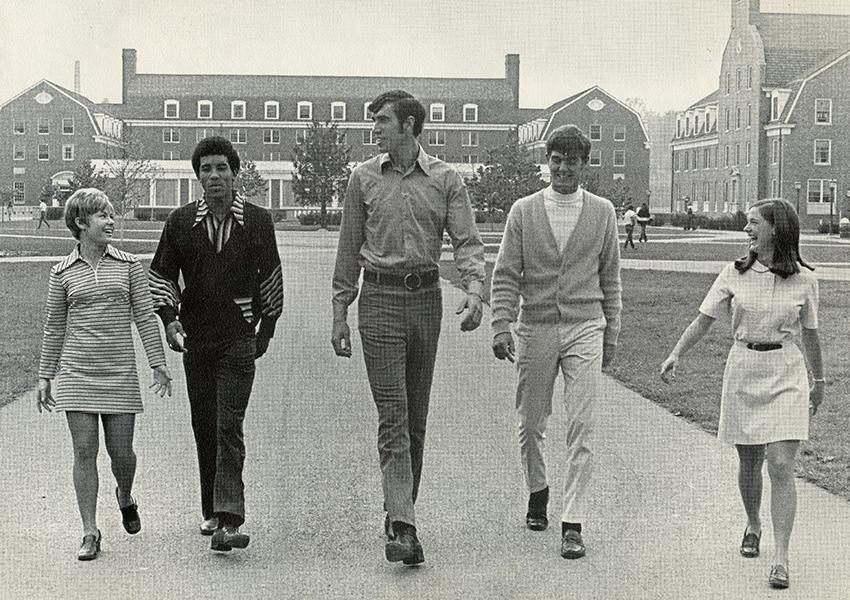
Craig Love, BSME ’71, Mechanical Engineering major
What is your favorite memory of your time as an Ohio University student?
Generally speaking, playing basketball was my best memory of OU. It was a time when scholar-athletes and amateur basketball was still the name of the game – before the lure of big money in pro sports I think certainly distorted it. It was team basketball, and I had a great time.
My favorite specific memory was in my junior year. We had probably the best team I was able to play with. We won the MAC. We beat four out of five Big Ten teams we played. We were at one time ranked fifth in the nation. We had a good time. And then the culmination of that was beating Bowling Green at home, and we set a record at the Convo – probably a record that will never be broken because the fire marshall was not pleased that there were almost 14,000 people that were hanging from the rafters! It was one of those times in college sports that you dream about. It didn’t end well because we went to the NCAA Tournament and got beat by Notre Dame – although we did set an NCAA Playoff record that still stands. We allowed Austin Carr to score 61 points against us, a scoring record that still stands.
Basketball was really my favorite memory. I mean it’s why I came to Ohio University. I stumbled onto campus as part of a recruiting tour, and, in my mind, it was the prototypical college campus – hilly, cobblestone streets, big trees, old brick buildings, little college town, and, of course, we had just built the Convo.
What led you to study engineering?
I kind of knew what I wanted to do all along. I followed my role model dad; he was an engineer. We’re from Detroit, so automotive engineering was always kind of in the air. Engineering was clearly what I was headed for, and, as a matter of fact, I was being recruited by some Big Ten teams – U of M, Ohio State and Purdue – that had well-known engineering programs, but OU was one of the MAC schools. Not every MAC school even had an engineering program, but when I saw OU and saw the campus and saw the Convo and met the president at that time, Vern Alden, and then discovered they also had an engineering program, I said, “Here’s where I want to go.”
Why did I want to be an engineer? I don’t know – science, math, how things worked always kind of appealed to me. Like I said, my dad was an engineer, and I admired him a great deal, so that worked out well for me. I was one of those guys that goes into school not questioning what he wanted to do – just, let’s go get it done.
What was it like to be a student-athlete at OHIO, and how did that experience impact your life?
That’s when student-athlete still meant a lot. I had no intention of going pro –never even thought about it. It just kind of happened. And what I experienced both in high school and in college is that I was never the most talented guy on the team. I was part of a team that was bigger than the sum of its parts. Both in high school – we were undefeated in high school two years in a row – and then in college, we had a really good run. And we never really had an All-American on the team; we just had a really good team that meshed together and played really well. That taught me the value of teamwork.
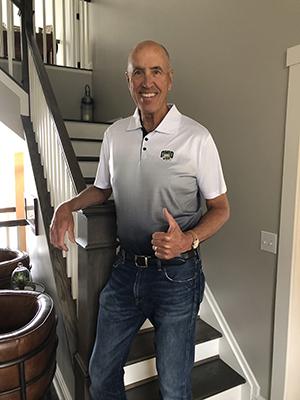
The difficulty of studying and then practicing and playing ball was a stress that forced me to organize things. In fact, I got my best grades during the season, surprisingly enough. But I played for a really great set of coaches. Jim Snyder was our coach, and he was a mentor, a counselor, a basketball coach, kind of a surrogate dad in a lot of ways. And I also got to meet Vern Alden who was then the president, and he was really into athletics and what he thought it could do for the University. And he was really interested in the athletes and their futures, beyond pro ball.
So, I was in shape my whole life thereafter. I hope I would’ve been happy and successful without basketball, but it sure shaped the way I thought about things, the value of teamwork and relationships, and just staying – I don’t know if strait-laced is the right word because OU was known as a party school even then – but it just seemed to be solid. I liked it; I really did.
Tell us about your life after graduation.
I married my high school sweetheart, and after trying out for the Buffalo Braves in Buffalo, New York, and them deciding I’d make a better engineer than a basketball player, I came back to an internship with Chrysler and started on what became a 38-year career. Married to the same woman, I’m living within five miles of where I grew up and only had one corporate employer.
My career was product engineering, designing the products that we marketed. My favorite assignment was when I was VP of Jeep Engineering; I thoroughly enjoyed that assignment. I was head of a small team that developed a specialty car, a two-seat, retro roadster called a Prowler – I brought it down to OU one time. I drove it down to OU back when I brought my son back to play basketball at a basketball camp with Larry Hunter, one of my college teammates. He was running (OHIO’s men’s basketball program) at the time. I showed that around and ended up talking to the engineering school a little bit about engineering careers and did some other stuff. But I had a great career there. I enjoyed it, retired about 13 years ago and have been enjoying that, too, along with my three kids. We just had our seventh grandchild – well, I didn’t have it, but I was somewhat involved – in the middle of a COVID year. It’s just been a great run, and OU was a big part of that.
What is something your fellow graduates might not know about you?
I’ll tell you one thing they don’t know about me is that it took me 72 years, but I finally sold my first autograph! I got a call from my son who was staying at our house, and he said, “You’ve got a letter from some guy in Knoxville, Tennessee,” and I said, “I don’t recognize that, but open it and look at it.” He started laughing and said a $20 bill fell out and this guy wants your autograph.
It turns out he was a collector. Way back there was an American Basketball Association, the ABA, in addition to the NBA, and I was drafted by both leagues. I only played for 15 minutes with the NBA team, but I was drafted by an ABA team, and he was collecting autographs of people from the ABA. I said, “He must be a long way down the list because I never actually played there.” Took me 72 years, but I earned 20 bucks for my autograph. He was just a really nice guy, a professional in some kind of finance company, and he just started up the process of collecting ABA signatures. He had Julius Erving and George Gervin, a lot of the players I’d played against, but not in the ABA. It was interesting. He sent me a card with the ABA team on it. He also sent me a card from Ohio University, so I got to sign an OU card. That was pretty cool.

Patrick McCabe, AB ’71, Cutler Program, Photography major
What is your favorite memory of your time as an Ohio University student?
My overall favorite experience was working on the Athena Yearbook staff. I did that actually for four years. I applied as a freshman and was accepted as a darkroom technician for two years, and then I became the assistant photo editor for one year and then the photo editor for my senior year.
Did you come to OHIO knowing you wanted to be a photographer?
Photography started with my Boy Scout merit badge in grade school. Then I was the photographer for the high school newspaper and high school yearbook.
I came from Milwaukee, and it’s a long way to Athens, Ohio, from Milwaukee, but at the time Ohio University was only one of three or maybe four universities in the country that offered a photography degree. It started with Clarence White Jr., who was the son of Clarence White, a famous photographer from New York back at the turn of the century. Clarence White Jr. set up the first accredited photography program in the country in 1948. The photography program, it was very unusual, and I wanted to get a photography degree, wanted to get a college degree, and I had plans to be a photographer. I was going to go back and work for The Milwaukee Journal where I had had summer internships as a photographer. So, coming to Ohio University for photography was kind of the third step in the process. …
I had an internship at National Geographic during my sophomore to junior year, or was it junior to senior? They offered two photographer internships, and I was lucky enough to get one of them. They sent me to Greenland with the Coast Guard, and we did surveying. At the time, we didn’t know if the icebergs in Greenland were receding or advancing, and the Coast Guard was doing surveys every couple of years. They’d send a ship up, and they would mark where the front edge of the glacier was at that time. Of course, this was before GPS and all that fun stuff. But that was the way it was, and eventually I ended up getting pictures published in one of their magazines.
A funny thing happened. The yearbook advisor – Chuck Scott, there at OU – had a friend who called for a recommendation for a photographer interested in photojournalism. He gave me a recommendation, and (that friend) was actually at the Postal Service. They had an employee magazine, and they wanted somebody to do photojournalism work primarily for that magazine. So, much to my surprise, I end up in Washington, D.C., working for the Postal Service. At that time, the magazine was called Postal Life, and it had a publication of 880,000 copies, six times a year. I was in the corporate headquarters’ communications department. I was the primary photographer, and we had videographers and PR people and writers, a graphic design staff – we had about 50 people in the department. I traveled the country, traveled the world for the Postal Service, had my own little studio and everything I could ask for and all sorts of opportunities. It was a tremendous time.
What were some of the groups or activities you were involved with on campus?
It was the yearbook. We had offices right next door to The Post, and the two of us shared a common dark room area. That really occupied my time; there was a lot to do in terms of the work. We had a relatively small staff of people, especially the last two years, and it was a full-time job so to speak. So, that was my primary activity, without question. …
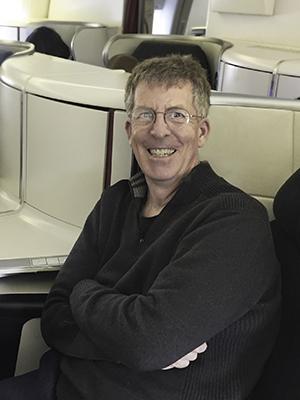
I think my favorite photo (as an OHIO student) was a whole series that I didn’t even take. It was sort of the invention of the selfie. There is a series of pictures – “People as they see themselves” – where I took out a camera, on a motor drive, and put it on a tripod in College Green, and had a 12-foot extension remote control to the camera. And I would stop people on the green, and I would say, “Strike a pose, take a picture of yourself, write down and describe yourself in words and pictures.” And we had a tremendous reaction. People had all sorts of expressions and comments, and it was one of my favorite projects. (To see this series in the 1971 Athena Yearbook, click here.)
Then there was another series. We had very different topics at the time, and we were trying to document student life and activities more so than the formal group portraits or professor portraits and things like that. One of the projects was the student tutors who would go out and help students learn – did a series on that and student tutors for educational progress. We got some really very nice images of kids and, again, gave children a camera to take home – an inexpensive $10 camera – but kids came back with really fascinating pictures around the playground and of themselves, so we published that story in the yearbook, too. (Click here to see that series in the 1971 Athena Yearbook.)
We were trying to do more of a photojournalistic outlook on campus life and activities. We would do a story on the people who kept campus going – the cooks and the people who maintained the buildings, subjects that maybe didn’t always come to the surface. We did a picture story on women in sports, which was kind of new back then.
What was life like on campus when you were a student?
It was extremely political with the Vietnam War, and there were just unending protests about every aspect of the war, and, obviously at the end of ’70, there were the riots and the tear gas. That was the extreme part of it. The whole country was in unrest and that was reflected on the campus from Kent State. I remember the tear gas coming into Baker Center, at the time being in the dark rooms and having to hightail it out. It got to the point where it was an issue of safety. They didn’t want anybody to get hurt, and campus closed.
Tell us a little more about your life after graduation.
At the Postal Service, we had an Olympic sponsorship in 1990 and 1992 for the Barcelona (Spain) and Albertville (France) Olympics. So, here I am spending two months, a month at each, in Barcelona and Albertville with the Postal Service, going to two Olympic events practically every day as part of that sponsorship.
I had a Christmas stamp, the 1980 “Madonna and Child” Christmas stamp. It was the second photograph ever to be on a U.S. postage stamp, and we printed 690 million of that one postage stamp. I traveled the world and spent five weeks photographing for international advertising campaigns in Sydney, Tokyo, Madrid and London.
After photography, I went into the marketing department, and this new thing called the internet was invented about that time. So, we developed business publications that, instead of being all print, started to go print and digital – and eventually all digital. We worked with the first versions of things like Photoshop and PageMaker, the first layout program. In the Postal Service at that time, when the whole digital revolution was going on, an organization of that size and magnitude is very much involved.
As a photographer, you get to travel around and see everything. You see the organization from all different perspectives and understand it. So, when I made the switch into the marketing department, that was all part of the continuing learning, which is really what one does.
I remember when I was in (Ohio University’s) Ohio Fellows Program, one guy said one day that, “All of you are going to have jobs that aren’t invented yet.” I thought that was the silliest thing that anyone could ever say because I knew exactly what I was going to do, but it turned out to be so absolutely true – that so much of what I did had never been invented at the time.
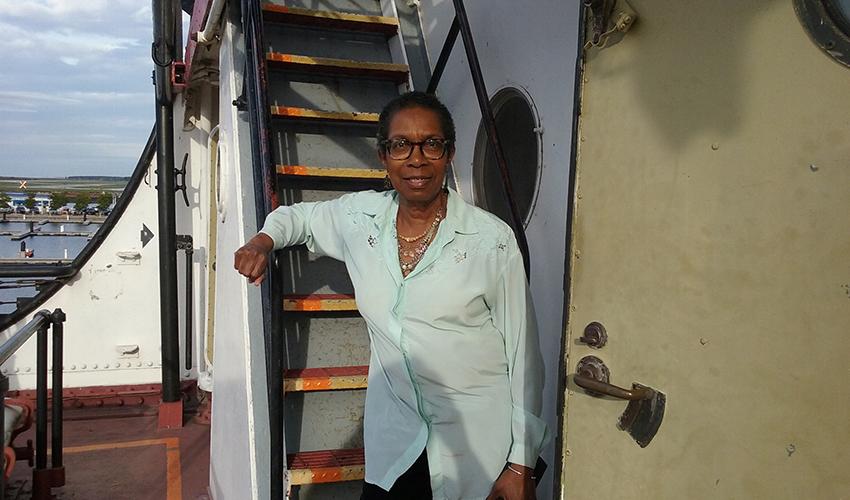
Ferne Ziglar, AB ’71, Spanish major
What is your favorite memory of your time as an Ohio University student?
Everybody that I have known that attended OU really, really enjoyed their experience. It was a fun time, and a great education.
I started freshman year as a journalism major but switched to Spanish because, after taking an honors course, I continued to get good grades. My favorite memory was spending the summer of 1970 in Jalapa, Mexico, as part of the Studies Abroad program. My OU roommate and I lived with a Mexican family, and a group of us from Ohio and other schools went on excursions throughout Mexico and just hung out together. I keep in touch with one of my classmates from that summer. What’s more, it was the only quarter that I received a 4.0 during my time at OU.
The other memory — I would call it “unforgettable” — has to do with the political unrest associated with the Vietnam War and the Kent State shootings in 1970. A lot of colleges closed, and ours was one of them, but OU was the only college that did not re-open in the state. There were also racial tensions on campus during that time. A group of us were living in the first and only all-black dorm—Davis Hall on the South Green. And when the school closed, the governor sent the National Guard to Athens, and troops surrounded Davis Hall. It was scary. My father came from Columbus and got me out of there. As we were exiting on Court Street, there were also National Guardsmen stationed all along the street. That was a memory I will never forget.
What were some of the groups or activities you were involved with on campus?
I pledged Alpha Kappa Alpha sorority and served as the president of the chapter my senior year. One of my line sisters here in Cleveland remains one of my best friends. We remember then and even now being part of a family and enjoying a common bond and affinity with Ohio University.
I was also part of the Language Lab crew at Ellis Hall. Even though it was a part-time job, it was a fun environment working with a great team.
What was life like on campus when you were a student?
While many universities are in the heart of cities, we were isolated in our own insulated world.
As a freshman, I lived in Biddle Hall and ate in Shively. In those early years, on Sundays everybody was expected to dress up for dinner. So, the ladies, we wore dresses or skirts or suits, and the guys wore ties and suits to dinner. It was special, with Sunday favorites such as chicken and dressing and all the fixings. It was a different time, different expectations, different traditions.

And just being on campus, Athens was and still is a beautiful place. We enjoyed walking up hills and climbing the steps from the East Green to the main campus. It was no big deal to walk to most places—we were young and could do all that walking and climbing. Back then, most of us did not have cars; now almost everybody has a car.
There was a camaraderie, particularly among Black students. In fact, in my first couple of years I knew every Black student by name. But by the time I graduated, I recognized faces but didn’t necessarily know everybody’s name. Nor did we have the kinds of resources and supports that OU students have today. So, as family, we looked out for each other, depended on one another.
Tell us about your life after graduation.
Even though I majored in Spanish, I had no desire to teach, but I wanted assurance of getting a job after graduation, so I earned teaching certification. OU had designated cities for student teaching, and Cleveland was one of them. So rather than returning to Columbus, I came to Cleveland for my student-teaching experience. I was hired as a Spanish teacher at the high school in East Cleveland, but at the end of two years, I was looking for a change.
I left my teaching job and started selling AAA Memberships. That was a great experience—being an independent salesperson. But soon afterward I decided to pursue my journalistic interest and became a news reporter at the Call & Post, an African American newspaper here in Cleveland. Then, when I got a call from Blue Cross, I started a career in public relations: first, as a writer, then as an external publications’ editor.
Later, a headhunter helped me find an opportunity at the Ohio Bell Telephone Company in employee communications. With internal clients statewide, I was traveling all over Ohio. And with support of the company, I joined the International Association of Business Communicators (IABC), a professional organization. I eventually became the two-term president of the Cleveland chapter of IABC and later helped form and lead a global group of multicultural communicators.
In 1986, I formed my own public relations firm, The Ferneway Company. By the ’90s, my company was growing, and we were doing campaigns for public and private sector organizations throughout the Midwest. I have always been passionate about health and wellness as well as technology. So, in the 2000s, we did work for Battelle and consulted on social marketing campaigns, including providing the first research on tobacco use among LGBT youth in Ohio. As an independent editor, I was a blogger for the launch of a pilot electronic news website designed to encourage communities of color and medically underserved to adopt and use health information technology.
I’ve had a fulfilling career in public relations, and now my projects center around content creation and content marketing.
But more importantly than what I have done in my profession, my greatest joy is in serving in Christian ministry—being part of the lead team for my church’s women’s ministry and sharing the Gospel of Jesus Christ via spoken word poetry.
How have you stayed connected to Ohio University and your fellow Bobcats?
Whenever I am with fellow Bobcats—in person or virtually—we talk about how we’re family, and we are. Back in the ’80s, a group of us in Cleveland formed an alumni group—the Ohio University Black Alumni Association, hosting social events and scholarship fundraisers. While that group no longer exists, I am now part of the 11-year-old Ebony Bobcat Network established at the urging of then Ohio University President Roderick McDavis. The EBN Urban Scholarship Endowment, created in honor of Dr. McDavis, provides tuition assistance to high-achieving students from urban school districts across Ohio. In EBN’s early years, I was involved with media relations and other communications. I stepped away from the group around 2013 for personal reasons.
But when the pandemic hit last year, EBN affiliates started meeting virtually, so I logged into a Zoom meeting. Next thing I knew, I was on the communications team and currently serve as chair of the EBN National Board Communications Committee. Our team provides guidance to affiliates on social media, and we just completed and distributed the Ebony Bobcat Network Winter 2021 e-newsletter.
